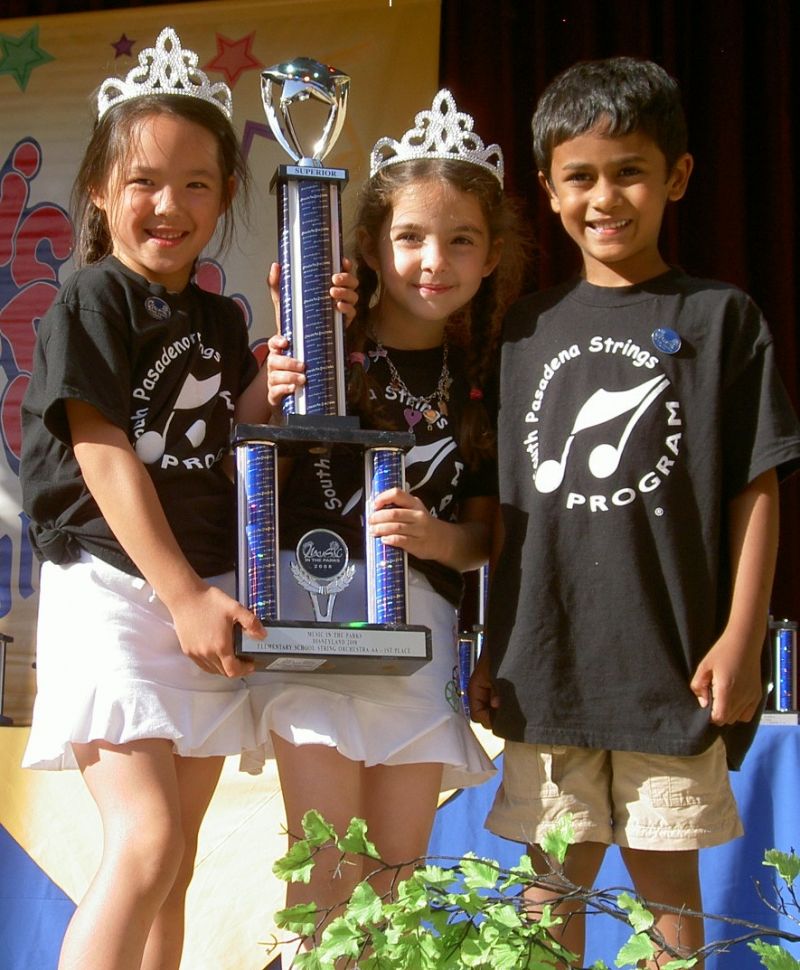Building a Successful Music Lesson Program: Step 3—Create an Orchestra
We’ve looked at the first two steps in building a successful music lesson program: enrolling young children early in piano and developing a strings program. These two programs can become a gateway to a third piece: an orchestra.
Our orchestras are at the heart of our music program and are also our main source of income. Creating an orchestra may seem daunting at first, but if you follow a certain format, you’ll find it very doable.
We have three levels of orchestra: Training Orchestra, Children’s Orchestra and the advanced Children’s Chamber Orchestra. Each accepts children by ability, not age. We’ve found that this works well, as parents are interested in education and moving their children forward.
Training Orchestra
The Training Orchestra captures the beginners who’ve completed at least one semester of the strings classes. Ages are usually 5–9. Students must be able to hold their instruments correctly and play a simple scale.
Children’s Orchestra
The Children’s Orchestra has about 60–80 members. (Our program is called the Los Angeles Children’s Orchestra, or LACO.) Ages tend to be 6–12. There’s a high level of enthusiasm in this group because we do so many fun things—festivals, competitions and concerts. For example, each year we participate in the Music in the Parks festivals, alternating between Disneyland, Sea World and Universal Studios. Kids work extra hard knowing they need to pass an audition in order to participate. The best part? Kids have fun in the parks with their friends and receive trophies for a job well done.
Seating auditions every semester are also motivating. Kids have an opportunity to move up within the orchestra—for example, from third to second violin. There are also opportunities for the more advanced kids to perform solos with the orchestra.
Publicity inspires both the children and parents. We regularly look for ways to get media attention, and our orchestra has been featured numerous times on local and national television and in print media.
Children’s Chamber Orchestra
Our most advanced orchestra is our Children’s Chamber Orchestra (the Los Angeles Children’s Chamber Orchestra, or LACCO), which includes youngsters through middle school age. It’s a small group of about 14 children who are serious about practicing (two to three hours a day). We were able to create the group because the children in our program tend to stay for a long time, becoming highly skilled and motivated players. The music is difficult—high school and college level—and we bring in teachers from the Los Angeles Philharmonic who are happy to work with such advanced youngsters.
Tips for Orchestra Setup
Quality standards. Over the years, the numbers and the playing level of our orchestras have increased. I attribute this to keeping our standards high and bringing in excellent teachers. Quality is crucial to the success of an orchestra program. Programs that don’t start kids properly don’t help anyone in the long run and can hurt your business.
Choose the right music. Choosing the right music for your group is vital. Have a minimum of two levels of orchestra, and select music that’s appropriate for each and the ability of the players. Music publishers generally categorize music as beginning, intermediate or advanced. Some use a numbering system with levels I, II, III and IV. Familiarize yourself with these systems, but more than anything else, spend time listening to new pieces before you buy. Think about what sounds good with your particular group, and cater to your strongest section.
Build a music library. For groups just starting out, avoid unison playing. Choose rhythmic pieces, such as “Mambo Amable” by Thom Sharp, that are easy and use percussion. Kids love them and so will your audience. Other composers and arrangers I’ve relied on are Richard Meyer, Larry Clark, Alan Lee Silva and Don Brubaker, who all write beautifully for student groups of all levels. Over the years, you will build up a music library. It’s well worth the investment.
Arrange for rehearsal space. Our program doesn’t have a big enough space to house LACO, so we rent the social hall at a local church. It’s very affordable and can also serve as a performance venue. Try opening your rehearsals to the locals—another way to gain community support and students.
Finally, an orchestra program will grow the retail side of your business. From frequently replaced items—rosin, strings, and worn-out or broken bows—to bigger items—music stands and replacement instruments—your sales are likely to increase.
Susan Pascale is founder and director of the nationally acclaimed Pascale Music Institute. Her two books, The Pascale Method for Beginning Violin and Practicing is for the Birds: The Ultimate Practice Organizer With Reward Stickers, are published by Alfred Music. Her children’s orchestras have been featured in national publications and on television. To see and hear her students in action, go to pascalemusicinstitute.com.

Join Us in Person for The NAMM Show
With a focus on innovation, the education offerings at The NAMM Show will help to prepare your business for the year to come.

Discover the Benefits of a NAMM Membership
Power our industry’s advocacy efforts by joining the NAMM community, featuring show access, education, discounts, networking, the Global Report and more!
